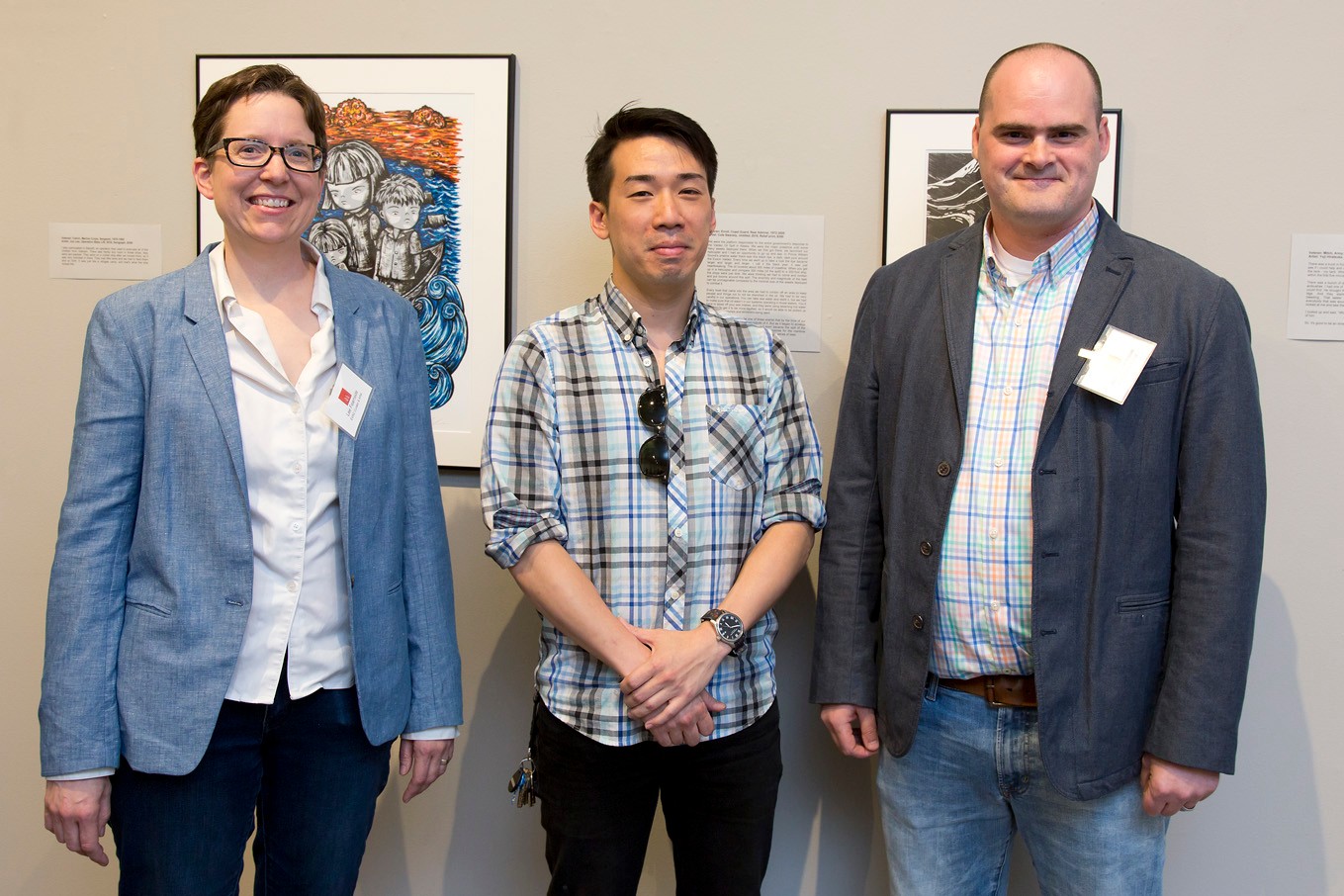We caught up with the brilliant and insightful Lee Fearnside a few weeks ago and have shared our conversation below.
Alright, Lee thanks for taking the time to share your stories and insights with us today. Let’s start with the story of your mission. What should we know?
The EVAC Project uses storytelling and art to bridge the gap between civilians and veterans by educating the public about life in the military. My Co-Curator, Joe Van Kerkhove, and I started the project in 2017 when we were both art professors at a small university in rural Ohio. We saw that there was a huge divide between our traditional students and our student veterans. Being artists, of course we thought that art was the answer! We had this idea to interview veterans and have art students make visual interpretations, but as we started to interview veterans and hear their stories, we realized this was bigger than a class project. For the first exhibition we interviewed about 20 veterans and recruited 20 artists, mostly from our personal networks. The artists are all printmakers, so that we could have original prints to exhibit and be able to give the veteran storyteller am original print as a thank you. Now, six years later, we’ve interviewed over 50 veterans and have almost 70 artworks in our collection based on their stories. The art and excerpts from the interviews are shown side by side, and EVAC has been exhibited across the country, at academic galleries, military museums, and more – places like the Walter Reed National Military Medical Center, Reagan National Airport, and the Flatiron Building in New York.

Great, appreciate you sharing that with us. Before we ask you to share more of your insights, can you take a moment to introduce yourself and how you got to where you are today to our readers.
I’ve been an artist my whole life. Some of my earliest memories are drawing out in the woods with my mother, also an artist. I earned my Master of Fine Arts in Photography from the Rhode Island School of Design in 2002, and worked as an art professor at a small university in rural Ohio for ten years. I met the EVAC Project Co-Curator, Joe Van Kerkhove, there. I managed the art gallery during my last few years there, and really enjoyed bringing artists and people together, having art generate conversations about challenging issues and ideas in our world. Although I no longer work in higher education, that curatorial and collaborative impulse remains in my work. I recently published an anthology, Death Never Dies, about famous people who died in 2020. The anthology has poetry and prose by 40 writers from around the country, and is illustrated by my relief print portraits. The book won the gold medal in popular culture from the IPPY Awards in 2022, and the silver medal in anthologies from the Midwest Book Association.

Can you tell us the story behind how you met your business partner?
As the only 2 artists at a university focused on its business school, Joe and I worked together and talk a lot about our challenges, our ideas, and our teaching. The EVAC Project grew out of those conversations. When we started it we never expected it to grow as big as it has – we thought it would be a great exhibition and that was it. At the opening, watching college-age students engage with older veterans, we realized it could be something more, something bigger, so we kept going.

How’d you build such a strong reputation within your market?
I think our mindset was our biggest strength when we were growing the EVAC Project. We weren’t afraid to ask for help, and we looked for opportunities where they came. After the first round of interviews, most of our veteran storytellers came to us by referral, either from other veterans who participated, from galleries where we exhibited, or through personal networks. We were scrupulous in being true to our word, being transparent in our process and giving people plenty of opportunities to opt out – which thankfully no one to date has done. We sell some of the prints and give a portion of the sales to a charity of the veteran’s choice, so they feel like their story gives back.
We also said yes to opportunities in unexpected places. We are both traditional visual artists, and initially thought only of traditional galleries to exhibit EVAC. However, we found more interest in unexpected settings like military museums and airports. I remember driving to an Army base and saying to Joe I never thought I would be doing this. I’m so glad I did – we’ve met some incredible people along the way.

Contact Info:
- Website: https://www.evacproject.org/
- Instagram: https://www.instagram.com/evacproject/?hl=en


